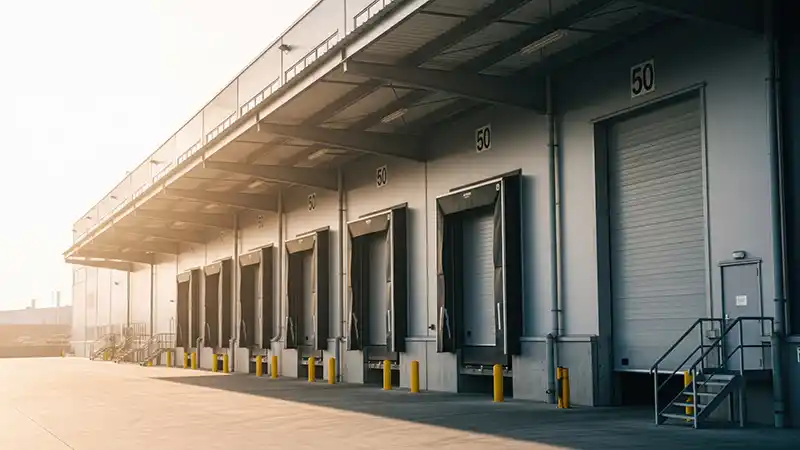In the world of North American freight, few voices carry as much weight as Volvo’s. When the global truck manufacturing giant revises its forecasts, the entire industry listens. In its most recent outlook, Volvo issued a stark warning: the freight slump that has gripped the market in 2024 is not just a passing phase, but a trend that could persist through 2026. For U.S. trucking fleets, this is more than a financial footnote. It’s a call to adapt, innovate, and find resilience in a changed landscape.
This article unpacks what Volvo’s forecast really means, why the slowdown is happening, and how fleets of all sizes can navigate the rough road ahead. We’ll examine the economic forces at play, the operational impacts, and the strategies that can help carriers not only survive, but position themselves for future growth when the market rebounds.
Volvo’s Forecast: The Numbers and the Message
Volvo’s latest financial reports and public statements paint a sobering picture. The company has cut its North American truck delivery projections, citing softening order intake, excess capacity, and persistent weakness in freight demand. According to Volvo, its order book for new Class 8 trucks is down by double digits compared to the previous year, and the company’s leadership has stated clearly that they expect “prolonged softness” in the market.
While other major OEMs, including Daimler and Paccar, have echoed similar concerns, Volvo’s warning stands out for its candor and specificity. The company is not just forecasting a bad quarter or a tough year. It’s telling the industry to prepare for a slow recovery that could last well into 2026.
Snapshot of the Data
• Volvo’s North American truck deliveries forecast is down by over 15% year-over-year.
• New Class 8 truck orders have dropped to their lowest point since 2019.
• Used truck inventories are rising, pushing resale values down and making it harder for fleets to upgrade.
• Spot and contract freight rates have both declined for six straight quarters, according to DAT and FTR data.
• Fleet bankruptcies are up, especially among small and midsize carriers.
What’s Driving the Freight Slump?
The Pandemic Boom and Its Aftermath
To understand the current slowdown, it’s important to look back at the unprecedented boom that followed the initial COVID-19 lockdowns. In 2021 and 2022, pent-up consumer demand, supply chain chaos, and inventory restocking drove freight volumes and rates to record highs. Fleets expanded rapidly, ordering new trucks, hiring drivers, and investing in technology to keep up.
But that growth was unsustainable. As supply chains normalized and consumer spending shifted from goods back to services, the freight market began to cool. Many fleets found themselves with more trucks than loads, and the balance of power shifted back to shippers.
Excess Capacity
The biggest single factor in today’s slowdown is excess capacity. During the boom, fleets of all sizes added trucks and trailers, expecting strong demand to continue. Now, with freight volumes softening, there are simply too many trucks chasing too few loads. This oversupply is putting downward pressure on rates and utilization.
Shifting Consumer and Retail Patterns
E-commerce growth, which was a major driver of freight volumes during the pandemic, has moderated. Consumers are spending more on travel, dining, and experiences, and less on physical goods. Retailers, burned by the bullwhip effect of over-ordering, are running leaner inventories and spreading their shipments across more modes and providers.
Industrial and Manufacturing Slowdown
Manufacturing output in the U.S. has been hit by higher interest rates, global economic uncertainty, and changing trade policies. As factories slow production, there’s less freight to move—especially for flatbed and specialized carriers.
Inventory Corrections
After the inventory whiplash of the past three years, shippers are reluctant to build up stockpiles. Many are adopting just-in-time or nearshoring strategies, which can reduce the number of full truckload shipments required.
Used Equipment Glut
As fleets right-size for the new reality, the market is being flooded with late-model used trucks. This oversupply has driven down resale values, making it harder for carriers to upgrade equipment or exit the market without taking a financial hit.
How Is the Slowdown Impacting U.S. Trucking Fleets?
The effects of the freight slump are being felt across every segment of the industry, from the largest carriers to owner-operators.
Falling Freight Rates
With more trucks than loads, shippers have the upper hand in contract negotiations. Spot rates have declined sharply, and even dedicated contract rates are under pressure. According to DAT, average van rates in mid-2025 are down 18% from their 2022 peak.
Deferred Equipment Purchases
Many fleets are putting off new truck orders, opting to run older equipment longer. This can increase maintenance costs and the risk of breakdowns, but it’s a necessary move for cash preservation.
Workforce Impacts
Driver hiring has slowed, and some fleets are reducing miles, shifting drivers to part-time, or offering fewer incentives. While the driver shortage has eased somewhat, retention remains a challenge, especially as pay and benefits come under scrutiny.
Increased Competition and Margin Pressure
With fewer loads to go around, carriers are expanding into new markets, offering more value-added services, and fighting to maintain customer relationships. Margins are tight, and only the most efficient fleets are able to break even or turn a profit.
Fleet Bankruptcies and Consolidation
Bankruptcies among small and midsize carriers have risen, and some larger fleets are looking for opportunities to acquire distressed competitors or their assets. The industry is likely to see further consolidation before the market recovers.
Regional and Sector Variations
Not all fleets are feeling the pain equally. Some sectors, such as refrigerated freight and dedicated contract carriage, are holding up better than general dry van or flatbed. Regional differences also matter. For example, Texas and the Southeast are seeing relatively stronger demand thanks to energy, construction, and port activity, while the Midwest and Northeast are more exposed to manufacturing slowdowns and retail softness.
Specialized carriers serving the automotive, chemical, or energy sectors may find more stable demand, while those tied to retail, furniture, or building materials are seeing sharper declines.
How Fleets Are Responding
The best-run fleets are taking proactive steps to weather the storm and position themselves for recovery. Here are some of the strategies being used across the industry:
1. Cost Control and Efficiency
Carriers are scrutinizing every expense, from fuel and insurance to maintenance and back-office operations. Technology is playing a bigger role, with telematics, route optimization, and predictive maintenance helping to squeeze more value from every mile. Fleets are also renegotiating supplier contracts and consolidating vendor relationships to get better terms.
2. Diversifying Freight Mix
Successful fleets are expanding into new customer segments, commodities, or regions. Dedicated contracts, intermodal, and final-mile delivery are all areas of growth that can help smooth out volatility. Some carriers are even exploring opportunities in specialized or hazardous materials hauling, which can command higher rates.
3. Smarter Equipment Management
Rather than defaulting to new truck orders, many fleets are leasing, buying used, or extending the life of existing assets. Preventive maintenance and warranty management are crucial to avoid costly breakdowns. Fleets are also looking at creative financing options, such as sale-leaseback arrangements, to free up capital.
4. Investing in People
Retaining experienced drivers and staff is a top priority. Fleets are offering retention bonuses, flexible schedules, and improved benefits to keep their best people on board. Training and upskilling programs are being expanded to help drivers adapt to new technologies and regulations.
5. Scenario Planning
Fleets are running “what if” scenarios to prepare for further rate declines, customer losses, or economic shocks. Having a plan in place is critical for making quick, confident decisions when the market shifts. Some carriers are even modeling the impact of a potential recession or major regulatory change on their operations.
6. Technology and Digital Transformation
The slowdown is accelerating the adoption of digital freight matching, automated billing, and real-time visibility tools. Fleets are using data analytics to identify inefficiencies, monitor performance, and make smarter decisions about pricing, routing, and asset utilization.
What This Means for OEMs and Truck Orders
Volvo’s forecast is a warning shot for the entire OEM sector. As new truck orders decline, manufacturers are adjusting production schedules, offering fewer incentives, and focusing on aftersales support. Fleets planning to purchase new equipment in the next two years should start conversations early and explore all financing options. Used equipment buyers should be cautious, as prices may fall further if production slows too much.
OEMs are also investing in new technologies, such as electric and autonomous trucks, but adoption may slow if fleets lack the capital or confidence to invest in unproven solutions during a downturn.
Opportunities Amid the Downturn
While the freight market is challenging, downturns often create opportunities for well-prepared fleets. Weak players may exit the market, opening the door for acquisitions or new customer relationships. Carriers with strong balance sheets can negotiate better terms with suppliers, invest in technology, and position themselves for growth when the cycle turns.
Fleets that can demonstrate reliability, flexibility, and superior service will be best positioned to win new business and retain existing customers, even in a tough market.
Long-Term Outlook: What Happens After the Slump?
Freight recessions don’t last forever. As capacity leaves the market and economic activity resumes, rates and volumes will recover. Fleets that survive the downturn with strong customer relationships, efficient operations, and a healthy workforce will be best positioned to grow when the market rebounds.
Volvo’s warning is sobering, but it’s also a call to action. The fleets that adapt, innovate, and stay close to their customers will not only weather the storm, they’ll come out stronger on the other side.
Conclusion
Volvo’s forecast of a freight slowdown through 2026 is a clear signal that the industry is entering a new phase. For U.S. trucking fleets, the message is simple: adapt, innovate, and prepare. By focusing on efficiency, diversifying your freight mix, and investing in people and technology, you can weather the storm and emerge stronger on the other side.












